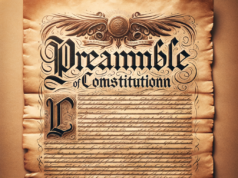Table of Contents
- 1 Understanding Amendment 4: A Historical Overview of Voting Rights in America
- 2 Key Provisions of Amendment 4: What Changes Were Implemented in Voting Laws?
- 3 The Impact of Amendment 4 on Voter Registration and Participation Rates
- 4 Analyzing the Legal Challenges and Controversies Surrounding Amendment 4
- 5 The Role of Amendment 4 in Shaping the Future of Voting Rights Advocacy

Amendment 4, ratified in 2018, represents a significant milestone in the ongoing struggle for voting rights in America. This constitutional amendment, which primarily addresses the voting rights of individuals with felony convictions, has sparked a national conversation about the inclusivity and fairness of the electoral process. As states grapple with the implications of this amendment, its effects on voter registration, participation rates, and the broader landscape of voting rights advocacy are becoming increasingly apparent. This article delves into the historical context of voting rights in America, the key provisions of Amendment 4, its impact on voter engagement, the legal challenges it has faced, and its potential to shape the future of voting rights advocacy.
Understanding Amendment 4: A Historical Overview of Voting Rights in America
The history of voting rights in America is marked by a series of struggles and reforms aimed at expanding the electorate and ensuring equal access to the ballot. From the abolition of property requirements in the 19th century to the landmark Voting Rights Act of 1965, the journey toward universal suffrage has been fraught with challenges. However, individuals with felony convictions have historically faced significant barriers to voting, often disenfranchised for life in many states. This disenfranchisement disproportionately affects communities of color and low-income individuals, exacerbating existing inequalities. Amendment 4 emerged from this historical context, aiming to rectify some of the injustices faced by those who have served their time and seek reintegration into society, including the restoration of their voting rights.
Key Provisions of Amendment 4: What Changes Were Implemented in Voting Laws?
Amendment 4 was designed to simplify the process of restoring voting rights to individuals with felony convictions who have completed their prison sentences, parole, and probation. Specifically, the amendment stipulates that voting rights shall be restored automatically upon completion of these terms, excluding those convicted of murder or sexual offenses. This provision marked a significant departure from previous laws in many states, which often required lengthy waiting periods or additional steps for individuals to regain their voting rights. By removing these barriers, Amendment 4 aimed to foster a more inclusive democracy and encourage civic engagement among those who have been historically marginalized.
The Impact of Amendment 4 on Voter Registration and Participation Rates
Since the ratification of Amendment 4, there has been a notable increase in voter registration and participation rates among individuals with felony convictions in Florida, where the amendment was primarily implemented. Reports indicate that hundreds of thousands of individuals have registered to vote since the amendment’s passage, reflecting a renewed interest in civic engagement among those previously disenfranchised. This surge in voter registration has the potential to influence election outcomes significantly, particularly in closely contested races. Furthermore, the amendment has sparked discussions about the importance of voting as a fundamental right and the need for continued efforts to dismantle barriers that prevent marginalized communities from participating in the democratic process.
Analyzing the Legal Challenges and Controversies Surrounding Amendment 4
Despite its initial promise, Amendment 4 has faced numerous legal challenges and controversies since its implementation. Critics argue that subsequent legislation, such as the requirement for individuals to pay all fines, fees, and restitution before regaining their voting rights, undermines the amendment’s intent. This has led to a complex legal landscape, with various court cases addressing the constitutionality of these additional requirements. Proponents of Amendment 4 contend that such financial barriers disproportionately affect low-income individuals, effectively reinstating a form of disenfranchisement. The ongoing legal battles highlight the contentious nature of voting rights in America and the challenges advocates face in ensuring that the spirit of Amendment 4 is upheld.
The Role of Amendment 4 in Shaping the Future of Voting Rights Advocacy
Amendment 4 has emerged as a pivotal point in the broader movement for voting rights advocacy across the United States. Its passage has galvanized grassroots organizations and activists to push for similar reforms in other states, aiming to dismantle systemic barriers to voting for individuals with felony convictions. The amendment serves as a model for advocacy efforts, demonstrating the potential for change through grassroots mobilization and public support. Additionally, it has sparked conversations about the need for comprehensive criminal justice reform and the importance of reintegrating individuals into society as full citizens, capable of participating in the democratic process.
In conclusion, Amendment 4 represents a significant advancement in the ongoing struggle for voting rights in America, addressing the disenfranchisement of individuals with felony convictions and promoting a more inclusive democracy. Its key provisions have led to increased voter registration and participation rates, while also igniting legal challenges that underscore the complexities of voting rights advocacy. As the amendment continues to shape the landscape of voting rights in the United States, its legacy will likely influence future reforms and the ongoing fight for equitable access to the ballot. The journey toward a more inclusive democracy is far from over, but Amendment 4 stands as a testament to the power of collective action and the enduring pursuit of justice in the American electoral system.
























